Bingham Canyon Mine (Kennecott Copper Mine), Utah
As a photographer of sorts I’m always looking for contrasts in scale to make my images more interesting. From zooming in close with macro mode on a flower or bee to zooming out to the highest degree possible for a vast Western panorama, the world can present endless perspectives to enjoy.
Once in a while you come across something that is so incredible that it’s almost impossible to describe the impact on perception. One such place for me at least is the Bingham Canyon Mine, also known as the Kennecott Copper Mine just outside Salt Lake City, Utah.
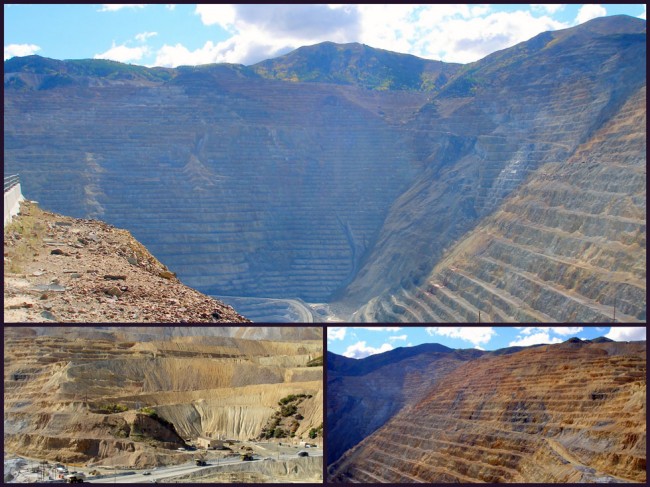
I’ve visited this place twice over about a 10 year period and the changes over that relatively short period of time are unbelievable. It was on one of my earliest Utah outings that we stopped by the mine one blustery day. As chance would have it they were getting ready to set off an explosion to loosen tons of rock for removal and processing. Standing in a bone-chilling wind we waited for the roar of the high explosives from the rim of the mine. Then we saw it, the cloud of dust from the bottom. We braced for what we knew would be a deafening roar, only to be met by the most-gentle “poof” imaginable. The mine was so deep, and we were so far above the explosion that the sound had mostly dissipated by the time the sound wave reached us, an amazing experience and testament to the size of the mine.
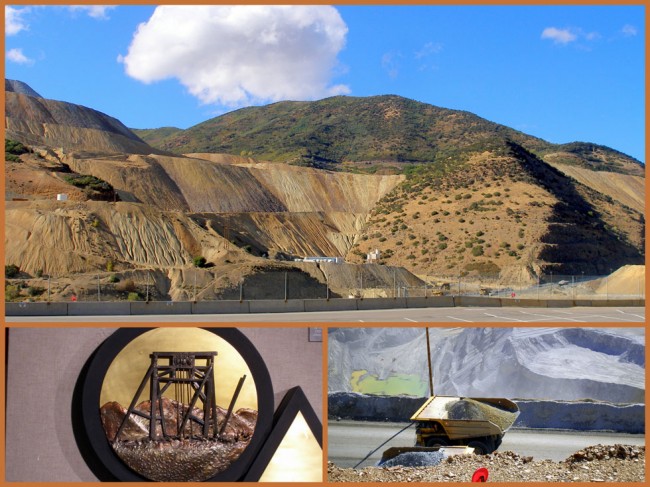
First opened in 1906, the mine is now over three fourths of a mile in depth and 2.5 miles in diameter, covering over 1,900 acres of ground. According to the Kennecott Utah Copper Corporation (which operates the facility for the UK-based Rio Tinto Group) it is the largest man-made excavation on Earth. It was designated a National Historic Landmark in 1966 under the moniker of Bingham Canyon Open Pit Copper Mine. Copper ore was first discovered by two Mormon brothers, Sanford and Thomas Bingham in 1848. They reported their findings to Brigham Young who decided that it wasn’t important at the time and told them to not pursue mining operations. Even so, the mine still bears their name over 150 years later.
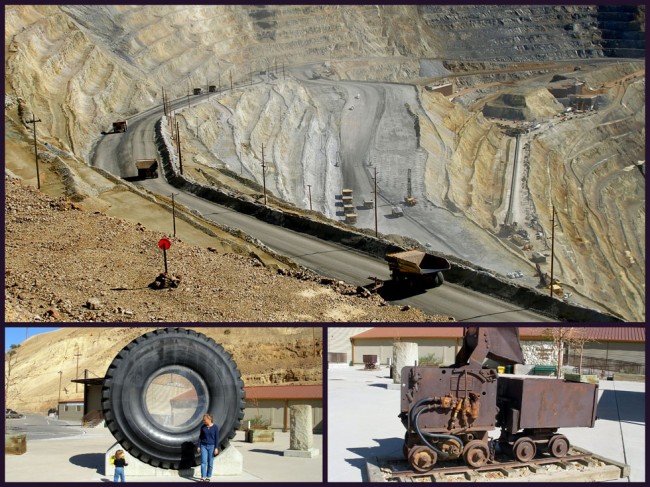
Though the numbers change daily, the Bingham Canyon mine has already produced more wealth than the Comstock Lode, Klondike and California gold rushes combined. Not all of this was from gold, but all minerals extracted.
As stated in the beginning of this Travel Log, the scale of this operation is unreal. The mine employees 18,000 workers, hundreds of contractors and removed 450,000 tons of material…………..DAILY! Even the equipment is super-sized with shovels that can remove 98 tons of ore per bucket load, trucks that can haul 255 tons at a time to their 5-mile long conveyer belt system that transports the raw materials to the Copperton concentrator and flotation plant. FYI, each of the 64 large haul trucks in the fleet cost about $3.0 million.
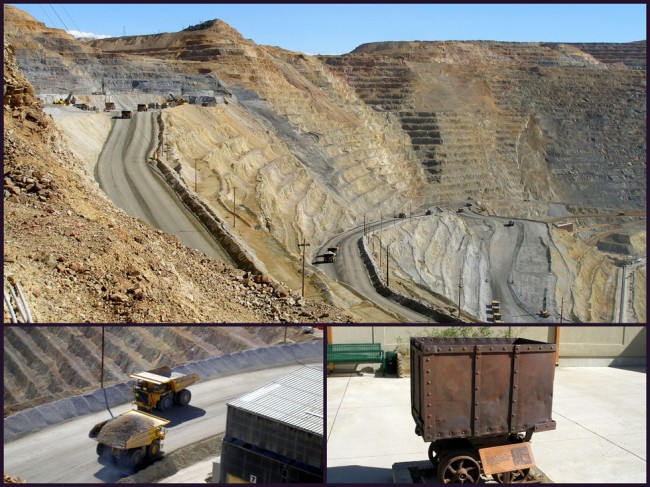
The current plan is for the mine to operate until 2019 at which time an extension of operations is under consideration. To put this into effect the company’s Board of Directors must approve the move, but only after acquiring the approximate 25 environmental permits necessary. If this comes to fruition then the mine could operate into the 2030’s.
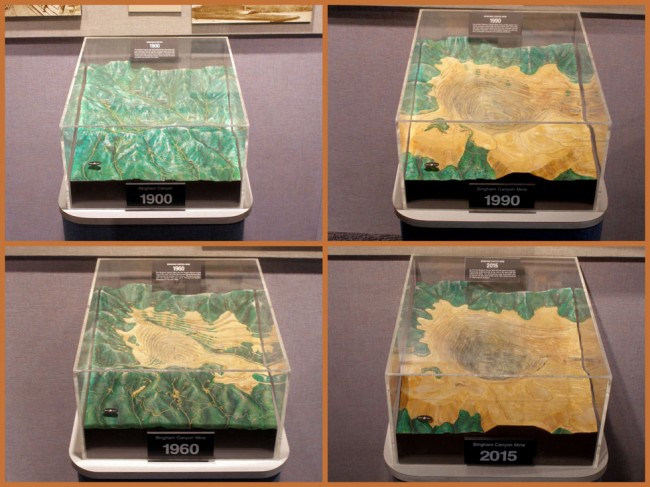
One of the more interesting things for me was the fact that in just a decade the pit had been made so much deeper that the company decided they needed to move their Visitor Center to another location, lower down into the excavation. The new facility is much larger, has an outstanding AV presentation and display area that can easily take up your morning or afternoon. The gift shop is top-notch and just a lot of fun.
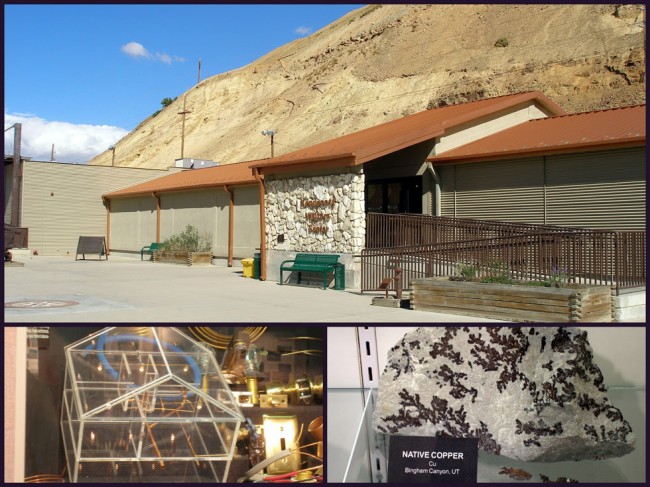
In April of 2013 the mine was shaken by a massive landslide, releasing 165 million tons of debris. The amount of material displaced by this slide could cover New York City’s Central Park with rubble 66 feet deep.. According to the AP (Associated Press) the slide was so powerful that it cracked the bedrock and caused unprecedented earthquakes. It is the larges natural disaster of it’s type in modern history according to scientists at the University of Utah. The debris slides fell as fast as 100 mph impacting with such force that they registered as magnitude-5 earthquakes and then triggered 16 smaller quakes where the bedrock cracked.
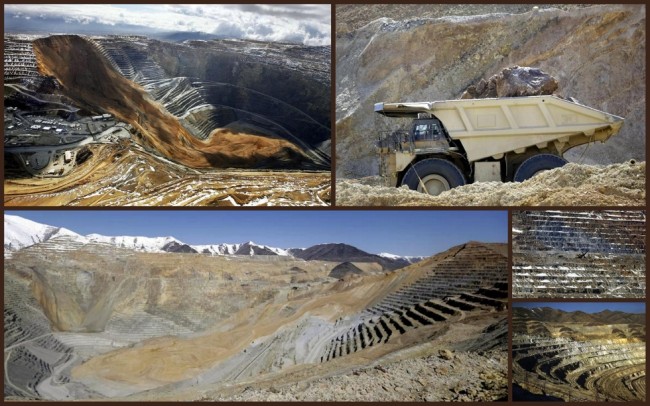
The images above were taken from the Associated Press news release on this incident. I didn’t get to take these for myself, too bad. It would have been a great show to watch!!
Luckily, there were no injuries or deaths as a result of the slide. It did temporarily shut down a copper mine, bury 14 giant haul trucks and lead to a series of layoffs and buyouts at Kennecott Utah Copper Corp.
For up-to-date information on visiting the mine, just go to their website: Kennecott Copper Mine Visitor Center or call them at 801-204-2025. If you’re into geology, and the practical application of minerals this is a “must see”. I know the environmentalists will hate this place, but maybe, just maybe they can be persuaded to understand the importance of utilizing natural resources for the betterment of our lives.
Last modified on: January 8th 2014.